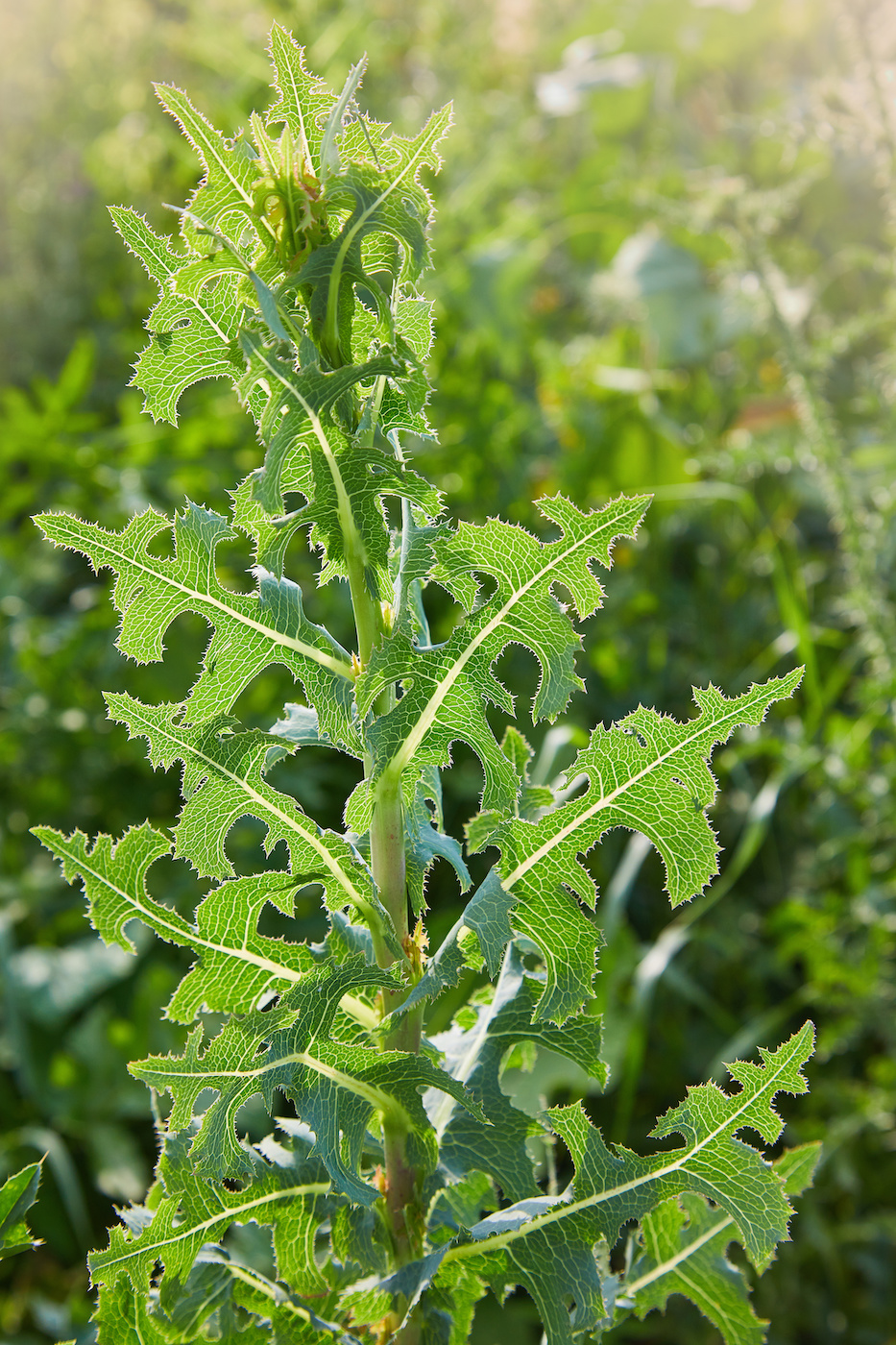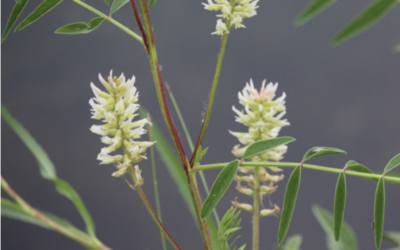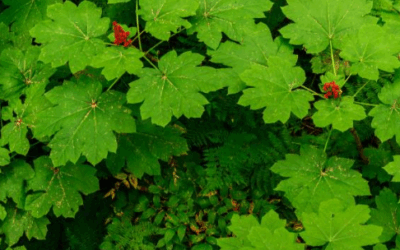Wild Lettuce: An Outstanding Wild Food, Pain Reliever, and More
For centuries, people have turned towards medicinal herbs to alleviate the symptoms of pain, insomnia, anxiety, and more. Wild lettuce is one such example. Also known as opium lettuce or prickly lettuce, it is famous for its ability to address pain. Interestingly, it was widely used as an opium substitute across Europe! The sap is excellent for making into a tincture, while the leaves can be sautéed and enjoyed like spinach. It’s an all-around outstanding wild food and herbal remedy. Here’s why.

Identification
Similar in appearance to a thistle with dandelion leaves, wild lettuce has a milky sap. Since it is a biennial, the first year of growth produces leaves in a basal rosette, with the second year producing a light green or purplish-green flower stalk that can grow up to 5 feet (1.5m) tall. In my new book, The Forager’s Guide to Wild Foods: Edible Plants, Lichens, Mushrooms, and Seaweeds, I discuss 3 species: L.canadensis, L. virosa, and L. serriola.
The small, yellow, dandelion-like flower head blooms from July to September and measures 0.3 inches (0.8cm) across. Seeds ripen between August to October. The leaves are lobed shaped or lanced and can be either toothed or smooth. They generally grow up to 10 inches (25cm) long and 3 inches (8cm) wide. Sometimes hairs grow along the mid-vein on the underside of the leaf.

Harvesting Wild Lettuce
In the northern hemisphere, the ideal time to harvest the sap is when the plant begins to flower — normally in July and August. Keep in mind that the flower stalk doesn’t develop until the second year of plant growth. The following process is a bit time consuming, but will yield the highest potency. To harvest the sap, make a cut in the stalk and let the sap slowly drip onto a plate or into a small cup. A shot glass works well. Once the sap stops flowing, make another cut further down, about an inch, and repeat the process. It will take about a half an hour to harvest the entire plant. The sap is alcohol soluble so it’s excellent for making a tincture.
Recipes
Here is my wild lettuce tincture recipe from The Lost Book of Herbal Remedies. Fill a clean, sterile glass jar with chopped fresh milky leaves or use 2 ounces (56g) of dried wild lettuce per cup of alcohol — vodka, brandy or another 80 proof alcohol are good choices. You can also use the sap directly. Cover the herbs with alcohol and stir to remove any air bubbles. Seal the container tightly and store in a cool, dark place and allow it to steep for 3 to 4 weeks, shaking daily. Strain out the herbs and discard. When stored in a cool, dark location, the tincture will last up to 5 years.
Sautéd Wild Lettuce Leaves and Shoots. You can harvest and eat the young leaves when they are about 3-4 inches (7-10cm) long. Boil for 10-15 minutes, changing the water halfway through to remove any bitterness. Drain, then sauté in butter and season to taste.
Top Medicinal Uses
The milky sap from wild lettuce has anti-spasmodic, digestive, diuretic, and sedative properties. The sap of Lactuca virosa is also used for pain relief. In fact, the herb was used in the past as a replacement for opium without the side-effects of addiction, constipation, or stomach distress. Its anti-inflammatory action also assists in reducing pain.
Historically, wild lettuce was used not only as a pain reliever, but also to treat health issues like whooping cough. Today, wild lettuce is used as a natural remedy for anxiety, menstrual cramps, arthritis, asthma, cancer, insomnia, restlessness, and urinary tract infections. It also has antibacterial properties when applied to the skin. The seed oil is used as a substitute for wheat germ oil to address atherosclerosis. Wild lettuce is known to promote relaxation as well.
Safety
While generally safe at a low dosage, one published paper reported a case of 8 patients who had consumed the plant in the wrong season (May instead of July/August) and experienced severe anxiety, vision issues, nausea, vomiting, dizziness, and loss of consciousness. The amount the men consumed is unknown. The team noted: “The toxicity may have occurred because the herb was ingested when it was fresh and before the usual time for harvesting herbs (our patients ate the wild lettuce in May).”
It can also cause urinary retention, extreme sensitivity to light, headache, and sweating when consumed in excessive amounts. Because interaction with pharmaceuticals is unknown, always consult with your healthcare professional before use if you are on prescription medication.

A Foraging Guide Like No Other
Learn more about wild lettuce and over 400 medicinal and edible wild foods in my new book, The Forager’s Guide to Wild Foods: Edible Plants, Lichens, Mushrooms, and Seaweeds. This wild food guide covers a wide-range of plants across North America.
Each entry has an introduction, a range map, edible uses, common medicinal uses, poisonous look-alikes, a description of the flowers and leaves for ID, excellent color photos, harvesting instructions, and a simple recipe.
Wishing you abundant and happy foraging!
Nicole Apelian




